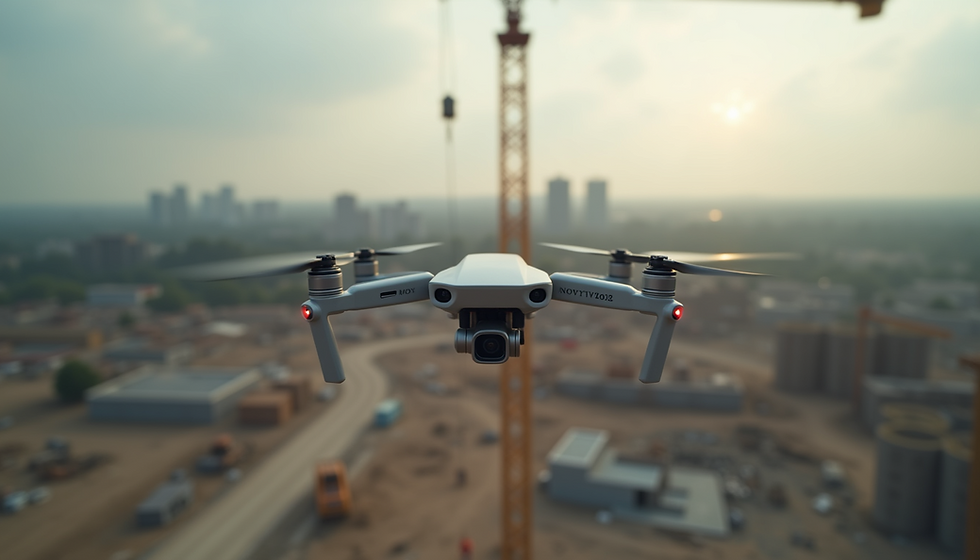The Human Element of Innovation: Why People Drive True Change
- sangeetadsoni
- 6 days ago
- 3 min read
Innovation often gets linked to the latest technology or breakthrough tools. Yet, true innovation begins with people, not machines. When organizations focus on human-centered innovation, they unlock creativity, collaboration, and solutions that technology alone cannot deliver. This is especially clear in fields like the AEC industry, where complex projects require more than just digital tools—they need people-first innovation to thrive.
Innovation starts with understanding human needs, motivations, and behaviors. Technology is a tool, but people are the ones who imagine new possibilities, test ideas, and bring change to life. In this post, I’ll share why putting people at the center of innovation matters, how it shapes digital transformation leadership, and what it means for industries like architecture, engineering, and construction.

Why People-First Innovation Matters More Than Technology
Technology evolves rapidly, but it cannot replace the human insight needed to solve real problems. When innovation focuses on people, it:
Addresses real needs: People understand the challenges they face daily. Innovation that starts with their input creates solutions that truly fit.
Encourages creativity: Human collaboration sparks ideas that no algorithm can generate alone.
Builds ownership: When people are involved in creating change, they support and sustain it.
For example, in the AEC industry, new software tools can improve design accuracy or project management. But without involving architects, engineers, and construction workers in the process, these tools might miss critical practical needs or fail to gain adoption. People-first innovation ensures technology supports the users, not the other way around.
How Human-Centered Innovation Shapes Digital Transformation Leadership
Leaders who guide digital transformation must focus on people as much as technology. Digital transformation leadership is not just about adopting new systems but about guiding teams through change with empathy and clarity.
Effective leaders:
Listen actively to employee feedback and concerns.
Create safe spaces for experimentation and learning.
Align technology with human workflows to reduce friction.
Communicate the purpose behind changes clearly.
In my experience, digital transformation leadership that prioritizes human-centered innovation results in smoother transitions and better outcomes. Teams feel valued and motivated, which accelerates adoption and drives continuous improvement.
Examples of People-First Innovation in the AEC Industry
The AEC industry faces unique challenges: complex coordination, tight deadlines, and safety concerns. Here are some ways people-first innovation makes a difference:
Collaborative design platforms: Tools that allow architects, engineers, and contractors to work together in real time, incorporating feedback from all stakeholders.
Wearable safety technology: Devices designed with worker input to ensure comfort and usability, improving adoption and reducing accidents.
Training programs: Interactive learning experiences developed with frontline workers to address skill gaps effectively.
One notable example is a construction company that involved its workers in selecting and customizing a new project management app. By focusing on their needs and preferences, the company increased usage rates by 40% and reduced project delays significantly.

Building a Culture That Supports Human-Centered Innovation
Creating lasting innovation requires a culture that values people’s ideas and experiences. Here’s how organizations can foster this culture:
Encourage open communication: Make it easy for employees to share ideas and feedback without fear.
Recognize contributions: Celebrate innovative efforts from all levels, not just leadership.
Invest in training: Equip teams with skills to use new tools and adapt to change.
Promote diversity: Diverse teams bring varied perspectives that enrich innovation.
In the AEC industry, where projects involve many disciplines and trades, this culture helps break down silos and improves collaboration. It also supports digital transformation leadership by creating trust and engagement.
The Takeaway: People Drive Innovation Forward
Technology will continue to evolve, but it will never replace the human spark that drives meaningful innovation. By focusing on human-centered innovation and people-first innovation, organizations can create solutions that last, inspire teams, and improve industries like the AEC sector.
If you lead digital transformation or innovation efforts, start by listening to your people. Understand their challenges, involve them in decisions, and build tools and processes around their needs. This approach will help you lead change that sticks and delivers real value.


Comments